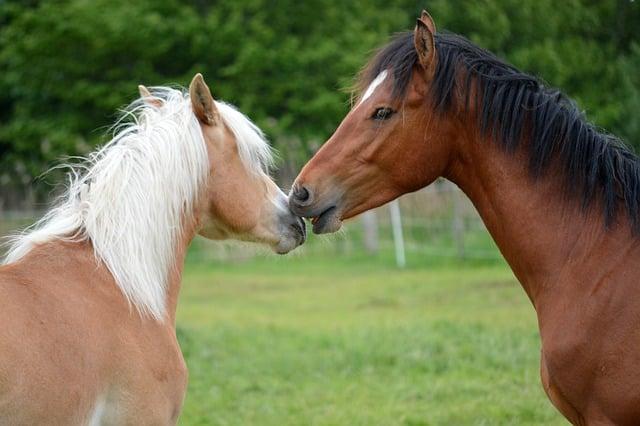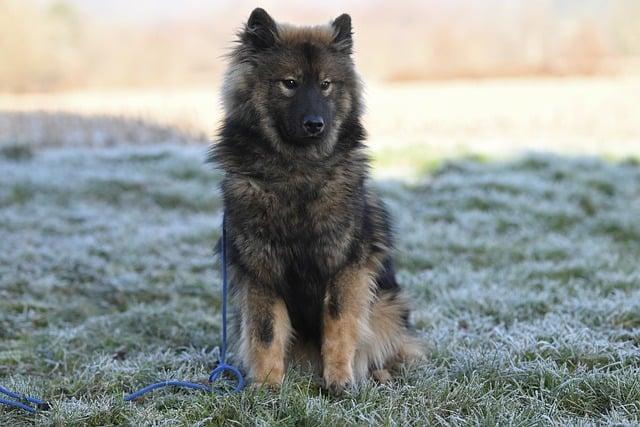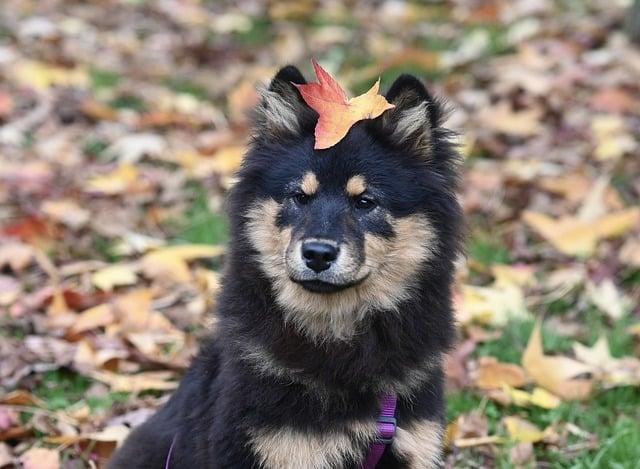Imagine a lively puppy named Max, bounding through the house with boundless energy, leaving a trail of chewed shoes and scattered toys. As he approaches his second birthday, something remarkable happens—Max begins to settle down. His frantic zoomies transform into leisurely strolls, and his once insatiable curiosity gives way to a calm demeanor. Research shows that most dogs start to mellow around 2 to 3 years of age. Understanding this natural progression can help owners embrace the joys of a more serene companion, making training and bonding even more rewarding.
Contents
- Understanding the Developmental Stages of Canine Behavior
- Identifying Signs of Maturity in Your Dog
- Strategies to Encourage Calmness in Young Dogs
- The Long-Term Benefits of Patience and Training for a Tranquil Companion
- Q&A
Understanding the Developmental Stages of Canine Behavior
Understanding the nuances of canine behavior is essential for any dog owner. Dogs, like humans, go through various developmental stages that significantly influence their temperament and energy levels. During the early months of life, puppies are often characterized by high energy and curiosity, which can lead to exuberant behavior. This stage, typically lasting until around six months, is marked by a strong desire to explore their environment, often resulting in playful antics that can be overwhelming for some owners.
As dogs transition into adolescence, usually between six months and two years, their behavior can become more unpredictable. This period is often referred to as the “teenage” phase, where dogs may test boundaries and exhibit heightened levels of energy. Owners may notice an increase in impulsivity and a decrease in focus, making training a challenge. However, this stage is crucial for socialization and learning, as dogs begin to establish their place within the family and their environment.
By the time dogs reach around two to three years of age, many begin to settle into a more balanced demeanor. This is often when owners report a noticeable decrease in hyperactivity and an increase in calmness. The combination of maturity and consistent training during their formative years contributes to this shift. Dogs become more adept at self-regulation, allowing them to better manage their impulses and respond to commands with greater reliability.
It’s important to recognize that while age plays a significant role in a dog’s behavior, individual temperament and breed characteristics also influence their calmness. Some breeds are naturally more energetic and may take longer to settle down, while others may exhibit a calm demeanor from a young age. Understanding these factors can help owners set realistic expectations and foster a nurturing environment that encourages positive behavior throughout their dog’s life.
Identifying Signs of Maturity in Your Dog
As your dog grows, certain behavioral changes can indicate a shift towards maturity. Recognizing these signs is essential for understanding your pet’s development and ensuring a harmonious relationship. One of the most noticeable signs is a decrease in hyperactivity. While puppies are often full of energy, a mature dog will exhibit a more balanced demeanor, showing less impulsive behavior and a greater ability to relax.
Another key indicator of maturity is improved focus and attention. Adult dogs tend to be more responsive to commands and training cues, demonstrating a willingness to engage with their owners. This enhanced concentration not only makes training sessions more effective but also fosters a deeper bond between you and your furry companion. Look for moments when your dog can sit calmly and respond to your commands without distraction.
Social behavior also evolves as dogs mature. A mature dog is likely to exhibit more confidence in social situations, whether interacting with other dogs or meeting new people. They may show less fear or aggression, opting instead for a more relaxed approach to social encounters. This shift can lead to more enjoyable outings and a greater sense of security for both you and your pet.
Lastly, consider your dog’s ability to self-soothe. Mature dogs often develop coping mechanisms for stress and anxiety, allowing them to handle various situations with greater ease. You may notice your dog seeking a quiet spot to rest or engaging in calming behaviors, such as chewing on a favorite toy or lying down peacefully. These signs of maturity not only reflect your dog’s emotional growth but also contribute to a more tranquil home environment.
Strategies to Encourage Calmness in Young Dogs
Creating a serene environment for young dogs is essential in fostering their calmness. One effective strategy is to establish a consistent routine. Dogs thrive on predictability, and having set times for meals, walks, and play can significantly reduce anxiety. **Incorporate quiet time** into their daily schedule, allowing them to relax and recharge. This predictability helps them feel secure and reduces hyperactive behaviors.
Another powerful method is to engage in regular training sessions that focus on obedience and impulse control. Teaching commands such as “sit,” “stay,” and “down” not only reinforces good behavior but also provides mental stimulation. **Positive reinforcement** techniques, such as treats and praise, can motivate young dogs to respond calmly to commands. This not only builds their confidence but also strengthens the bond between you and your pet.
Physical exercise plays a crucial role in promoting calmness. Young dogs often have excess energy that can lead to restlessness if not properly channeled. **Incorporate daily activities** such as walks, fetch, or agility training to help them burn off energy. Additionally, consider introducing calming activities like swimming or hiking in nature, which can provide both physical exertion and a soothing environment.
Lastly, creating a designated calm space in your home can significantly benefit your young dog. This area should be quiet and comfortable, equipped with their favorite bed or blanket. **Encourage your dog to use this space** during stressful situations or when they need a break. You can enhance this environment with calming scents, such as lavender, or by playing soft music to promote relaxation. By providing a safe haven, you help your dog learn to self-soothe and find tranquility amidst the chaos of daily life.
The Long-Term Benefits of Patience and Training for a Tranquil Companion
Investing time in patience and training can yield remarkable long-term benefits for both dogs and their owners. A well-trained dog not only enhances the bond between pet and owner but also fosters a peaceful home environment. Through consistent training, dogs learn to understand commands and expectations, which significantly reduces anxiety and behavioral issues. This understanding leads to a more harmonious relationship, allowing for enjoyable interactions and a deeper connection.
Moreover, patience during the training process is crucial. Dogs, much like humans, require time to absorb new information and adapt to changes. By approaching training with a calm demeanor, owners can create a safe space for their pets to learn and grow. This approach not only helps in developing a well-mannered companion but also instills confidence in the dog. A confident dog is less likely to exhibit fear-based behaviors, leading to a more relaxed and tranquil presence in the household.
Additionally, the benefits of training extend beyond mere obedience. A well-trained dog is often more adaptable to various situations, whether it’s meeting new people, encountering other animals, or adjusting to different environments. This adaptability can significantly reduce stress for both the dog and the owner, making outings and daily activities more enjoyable. As dogs mature, the skills learned during training become ingrained, resulting in a calm demeanor that enhances their overall quality of life.
the long-term effects of patience and training manifest in a dog’s emotional well-being. A tranquil companion is not only a joy to have but also contributes to a positive atmosphere in the home. By fostering a sense of security and stability through training, owners can help their dogs navigate the complexities of life with ease. This investment in time and effort pays off, creating a lasting bond and a peaceful coexistence that benefits everyone involved.
Q&A
-
At what age do dogs typically calm down?
Most dogs begin to show signs of calmness between the ages of 1 to 3 years. This is when they transition from the energetic puppy stage to a more settled adult phase.
-
Does breed affect when a dog calms down?
Yes, breed plays a significant role. Some breeds, like retrievers and bulldogs, may calm down earlier, while high-energy breeds, such as border collies and terriers, may take longer to settle.
-
Can training influence a dog’s calmness?
Absolutely! Consistent training and socialization can help dogs learn appropriate behaviors, leading to a calmer demeanor as they mature.
-
Are there ways to help my dog calm down sooner?
Yes, engaging in regular exercise, providing mental stimulation, and establishing a routine can significantly help your dog become more calm and balanced at an earlier age.
understanding your dog’s developmental stages can lead to a more harmonious relationship. By recognizing that calmness often comes with age, you can tailor your training and care to nurture their growth, ensuring a peaceful and fulfilling companionship.

大家好,我是彼得潘,專業的手法身體治療師。我喜歡探索和研究各種主題,並透過與人工智慧的合作分享專業、實用、有趣的文章。我們定期進行人工審核,以確保內容的準確性。如果您發現文章中有任何不準確的地方,請隨時與我們聯繫,我們會及時糾正。您可以透過 [email protected] 與我們聯繫。



